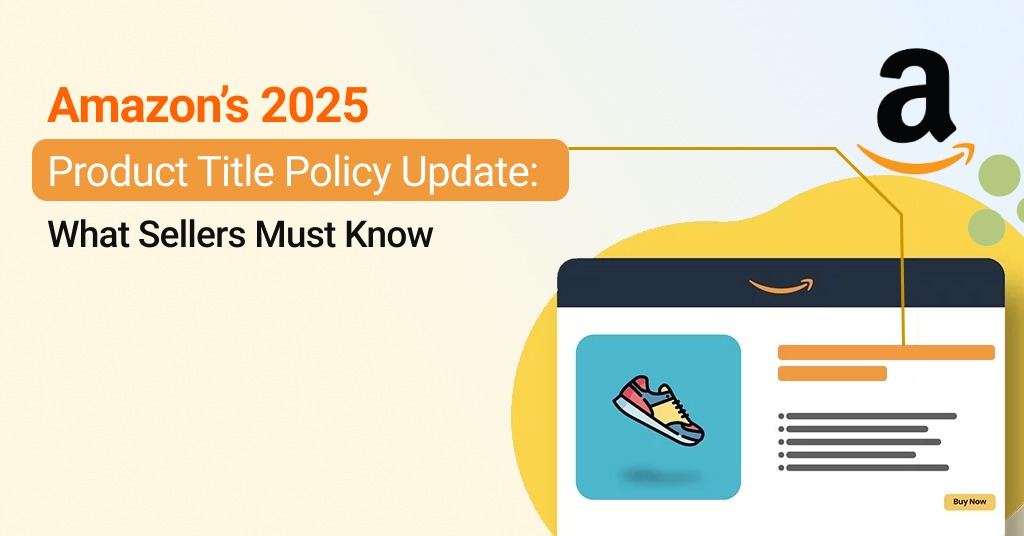
Amazon has recently rolled out a product title policy update after noticing overly long titles with unnecessary or redundant words that were impacting customers’ shopping experience and confidence. This update caught many sellers off guard, especially those managing large catalogs on the website. They are now required to rework on dozens of product titles under tight deadlines to avoid listing suppressions or performance issues.
For many, the biggest challenge isn’t the change itself but the lack of clarity around what exactly has changed. If you are someone who is still unsure about how to stay compliant going forward, this article provides a clear breakdown of the key updates in the title policy, what they mean for your Amazon product listings, and what steps you should take now to optimize your product pages. Let’s begin!
Table of Contents
- Highlights of the Amazon Product Title Policy Update 2025
- Will your Listings be Suppressed If you Don’t Comply with the Amazon Policy Changes in 2025?
- Does This Policy Change Apply Only to the Title Parent, Title Child, or Both?
- How Can Bulk Titles on Amazon Be Optimized According to the Latest Policy Update?
- Are the Title Auto-suggestions Provided by Amazon Effective and Worth Using?
- What Should Amazon Sellers Do Now?
Highlights of the Amazon Product Title Policy Update 2025
Amazon’s listing requirements are simple: Your titles should be easy to read, properly formatted, and straight to the point. Here is how they are ensuring this with the latest title guidelines:
1. New Title Character Limit
For most product categories, Amazon recommends keeping titles within 200 characters (for Parent ASIN), including spaces. But that leads to a common question: What exactly does “most” include?
To clear the confusion, Amazon has provided a category-specific list with exceptions based on your region, which you can refer to here.
2. Disallowing Special Characters
The second key update in Amazon title guidelines is the ban on certain special characters such as !, $, ?, _, {, }, ^, ¬, and ¦ unless they are part of your registered brand name.
For instance, titles like “Limited Offer!” or “Best $ Price” are no longer allowed. However, if your registered brand name includes a special character like TaDa! or $ave More — you’re allowed to use it.
However, there is confusion among sellers about symbols not explicitly mentioned in the Amazon policy changes of 2025. What about |, ;, ~, #, <, >, and *? They are still allowed but in specific contexts (product identifiers, measurements, and separators).
For example, Storage Cabinet | 3-Shelf | Metal is still compliant because “|” is used as a separator, but Top-Rated <Laptop> | Best Deal ~ Buy Now! is non-compliant because <,>, and ~ are used for decorative styling.
For categories like “Books,” special characters are allowed if they are part of the book’s title. Amazon has stated that this change will be applied on a case-by-case basis, as there are category-specific exceptions.
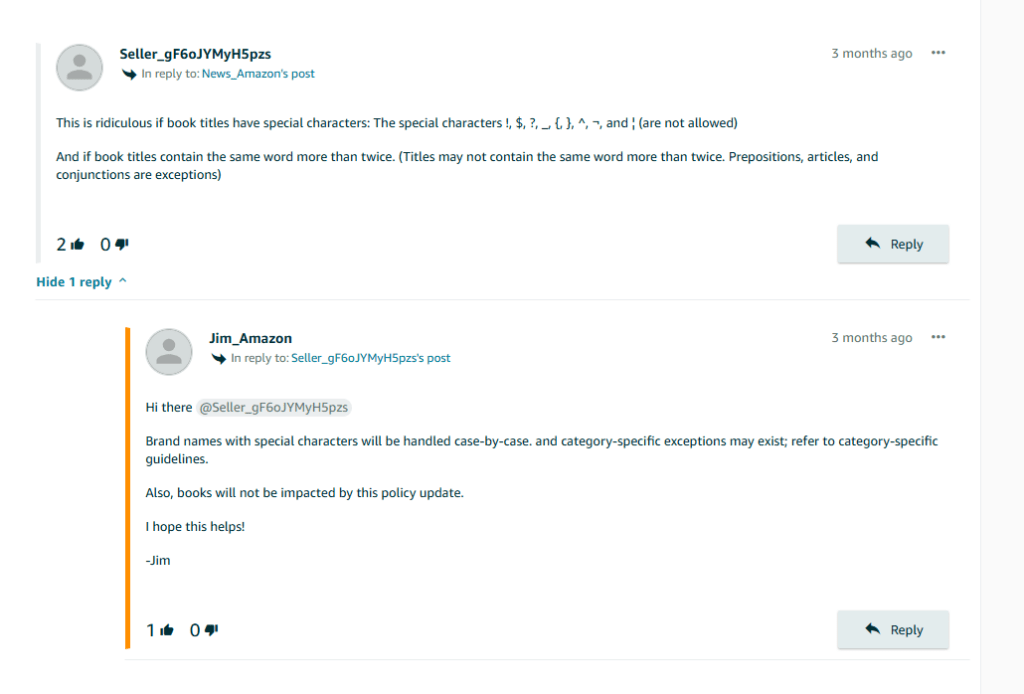
3. Restrictions on Word Repetition
The most significant change of all is the restriction on using the same word more than twice in a product title unless it’s a preposition, article, or conjunction. This naturally raises many questions for sellers, such as:
What about plural forms of the same word? Or words separated by hyphens that may appear similar? Or what if a similar word is part of a brand’s name? What about compounding keywords?
Amazon provided clarity on all these questions during its AMA (Ask Me Anything) session. Let’s see them one by one:
i. What about plural forms of the same word

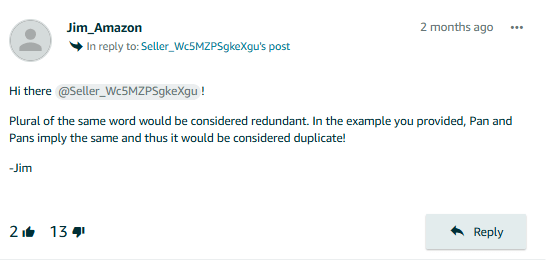
ii. Words separated by hyphens that may appear similar
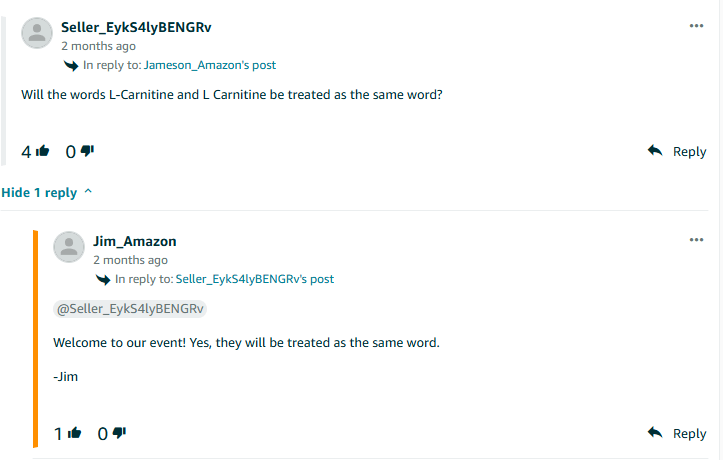
However, exceptions exist if the same word is used multiple times, but its meaning (or terminology) changes every time. For example:
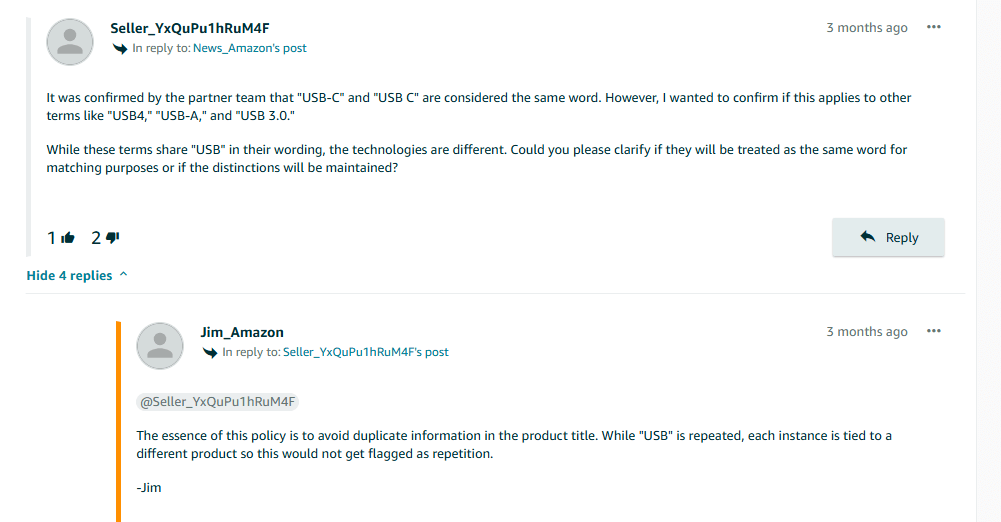
iii. What if a similar word is part of a brand’s name
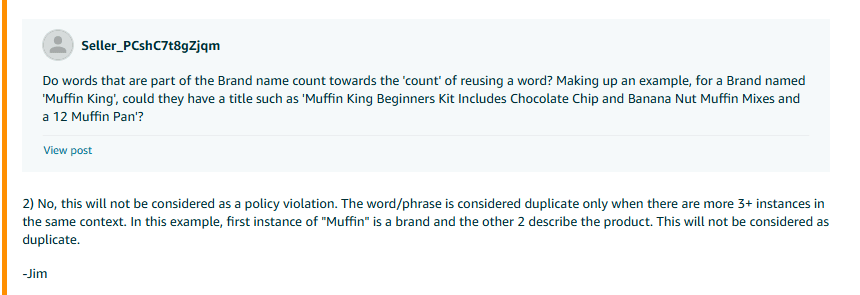
iv. Is compounding considered as using the same keyword?
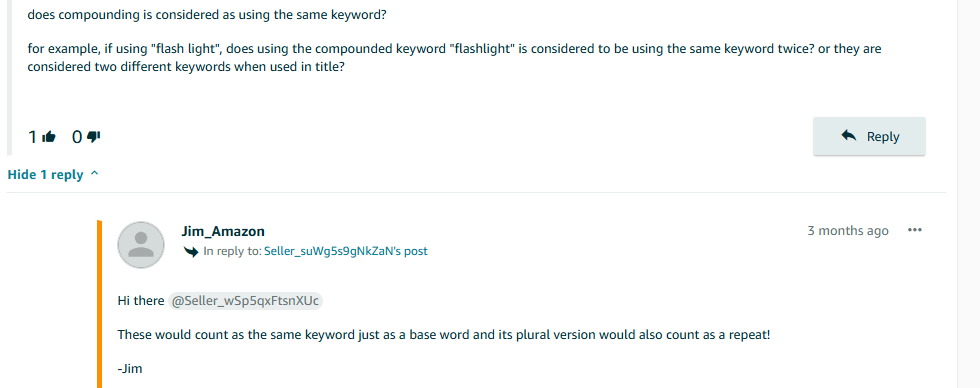
Will your Listings be Suppressed If you Don’t Comply with the Amazon Policy Changes in 2025?
As clarified in Amazon’s AMA session, non-compliant listings will be flagged, and suggestions will be provided for corrections. Sellers have 14 days to implement these changes before the platform automatically updates the titles to ensure Amazon listing compliance. If a seller rejects the suggestions and fails to make the necessary changes, the listings may eventually be suppressed.
Does This Policy Change Apply Only to the Title Parent, Title Child, or Both?
Yes, this latest Amazon title policy update applies to both parent and child titles. Hence, sellers need to make sure that both titles are optimized as per the recent Amazon title guidelines.
How Can Bulk Titles on Amazon Be Optimized According to the Latest Policy Update?
The best way to update bulk titles on Amazon is to use a CSV file. For that, you first need to download a category listings report by following these steps:
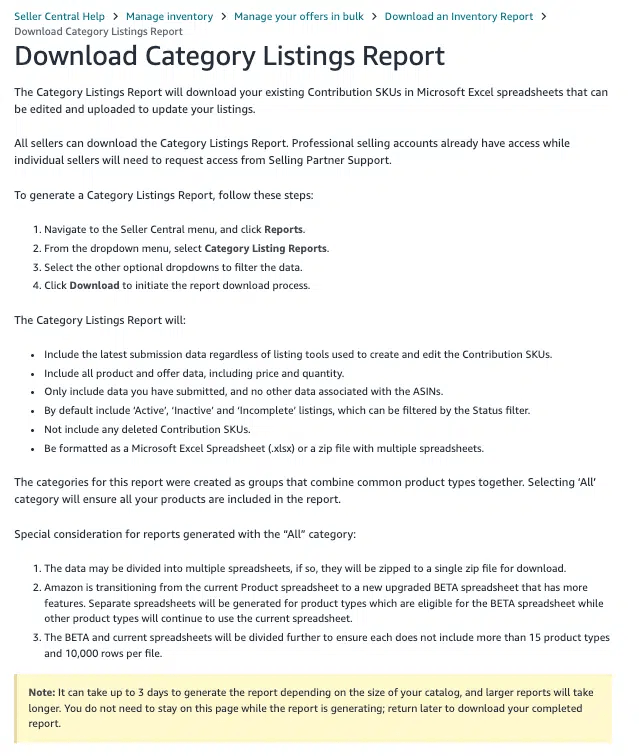
Once you have the downloaded file, you can update multiple titles in one go. To make the process faster and simpler, use the “Find and Replace” feature. After making all the necessary changes, upload the CSV file to Amazon and wait 24 hours for the updates to go live.
Pro Tip: If you believe any of your listings have been incorrectly flagged by Amazon or need an exception, raise a ticket with their customer support to resolve the issue as soon as possible.
Are the Title Auto-suggestions Provided by Amazon Effective and Worth Using?
There is a continuous debate going on about the relevance and quality of titles suggested by Amazon’s AI system under this update. As per Amazon, all the relevant information and key terms will be retained during automatic title updates, with only irrelevant or repetitive details being removed. As a result, there should be minimal impact on search traffic after the automatic title optimization.
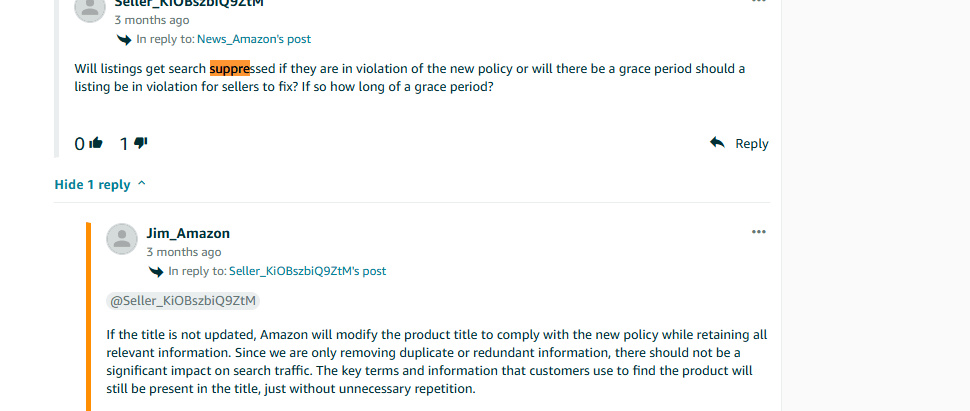
However, many sellers are contradicting this by reporting a decline in traffic and conversions after using the auto-suggestions. What was once one of their best-performing listings has since seen a drop, particularly after Amazon’s bot created new parent listings for them.
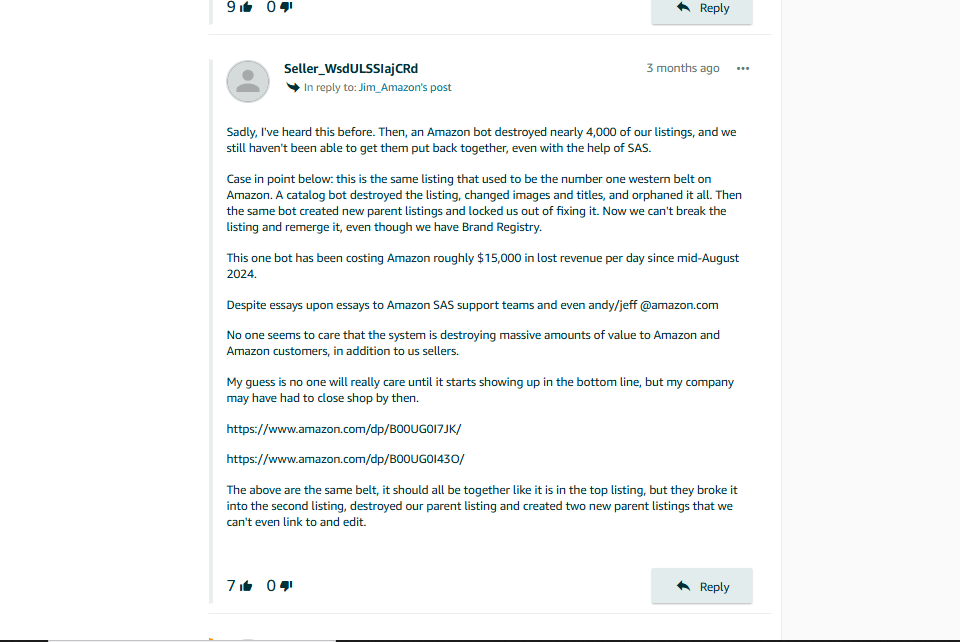
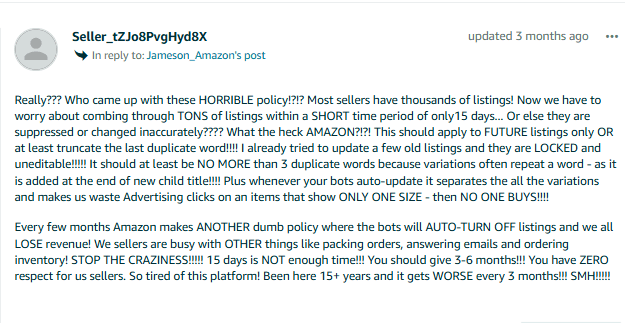
What Should Amazon Sellers Do Now?
Although Amazon has tried providing answers to most questions regarding this update, some confusion and uncertainty remain, leaving sellers unsure of the next steps. While the update may seem straightforward at first glance, complexity increases case-by-case. In light of this, we recommend two approaches—choose the one that best fits your preferences and needs.
1. Do-It-Yourself (DIY) Approach
It is better to take action before Amazon flags any of your listings. Start by auditing all your listings and make sure all the titles are:
- Within 200 Characters
- Don’t have repeated or same phrases more than twice (except the cases specified by Amazon)
- Don’t have restricted special characters
If you have a large number of SKUs, begin with your high-traffic or high-converting listings, as optimizing these will have the greatest impact. Once those are optimized, move on to the lower-performing ASINs.
Auditing is just one part of the process. The other equally important part is monitoring. Make it a habit to regularly visit the Review Listing Updates section in Amazon Seller Central. This is where you’ll receive notifications whenever Amazon suggests title changes. You have a 14-day window to approve, reject, or revise these changes before the AI overrides them automatically.
As we’ve seen, some sellers question the auto-suggestions made by Amazon’s AI, so it’s better to make the necessary adjustments yourself within the given timeframe, as AI suggestions may not always align with your preferences.
2. Take Help From Professionals
If the DIY approach seems too overwhelming or time-consuming to you, we are always here to help you with Amazon product listing optimization. As a certified Amazon SPN partner, we keep our team up-to-date on all the latest updates and guidelines. Our Amazon listing experts can check all the guidelines for your niche and optimize titles as per the latest regulations without compromising with title relevance or quality.
Also, with our flexible workflows and a vast in-house team, you don’t need to worry about turnaround time for bulk SKUs. Beyond product listing optimization, we also proactively address issues with Amazon’s support team, keeping your listings compliant, competitive, and performing at their best.
Ready to Optimize Amazon Listings According to the Latest Title Policy Update?
Our Amazon listing optimization services ensure your products meet all title requirements while maintaining optimal search visibility.

